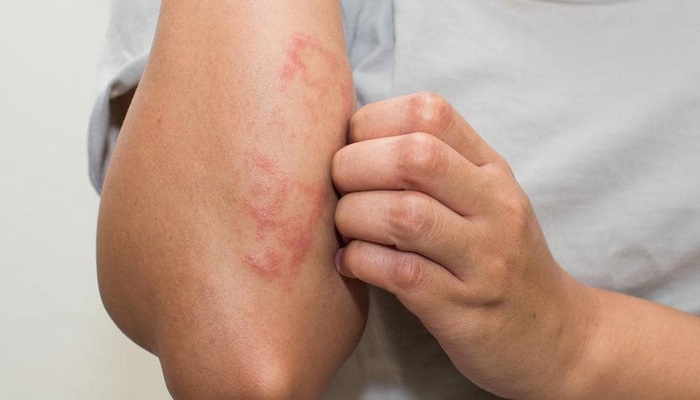A significant breakthrough has been made by researchers from the National Institutes of Health (NIH) in collaboration with scientists from the University of California San Diego (UCSD) and the University of Pittsburgh in understanding and potentially treating a rare and severe inflammatory skin disorder called disabling pansclerotic morphea. By examining the genome, they have identified that this disorder, which was first documented a century ago, is characterized by debilitating symptoms including severe skin lesions, impaired wound healing, deep scarring of the skin and muscles, and joint stiffness that ultimately leads to reduced mobility.
Using genome sequencing, the researchers analyzed four individuals affected by disabling pansclerotic morphea. Their analysis revealed genomic variants in the STAT4 gene in all four patients. The STAT4 gene encodes a protein called STAT4, which plays a role in regulating inflammation and wound healing. These genomic variants lead to an overactive form of the STAT4 protein, initiating a harmful cycle of inflammation and impaired wound healing that worsens over time.
To break this detrimental feedback loop, the researchers targeted a crucial protein in the inflammatory pathway called Janus kinase (JAK), which interacts with the overactive STAT4 molecule. They administered ruxolitinib, a JAK-inhibiting drug, to the patients, and the results were remarkable. The patients experienced a remarkable improvement in their rashes and ulcers. This discovery challenges the previous notion that the disorder solely involved the immune system attacking the skin, highlighting the active role played by both the skin and the immune system in disabling pansclerotic morphea.
Due to its rarity and limited understanding, disabling pansclerotic morphea has lacked a standardized treatment. Existing therapies aiming to halt the progression of the disorder have proven largely ineffective and often accompanied by severe side effects. The discovery of the potential efficacy of ruxolitinib represents a crucial breakthrough, providing an important new treatment option for these patients.
The drug ruxolitinib falls under the category of JAK inhibitors, a class of medications frequently used for the treatment of chronic inflammatory diseases like arthritis, eczema, and ulcerative colitis. Based on their findings, the researchers suggest that these results have wider implications, indicating the potential of JAK inhibitors in treating various inflammatory skin disorders and conditions characterized by tissue scarring. This could extend to ailments affecting the liver, lungs, or bone marrow.
The researchers are keen to further investigate other molecules involved in this pathway and their effects on patients with disabling pansclerotic morphea and related conditions. Their hope is that further research in this area will shed light on a wider range of more common diseases.



















